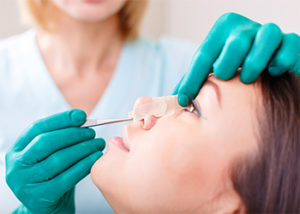So you are planning to undergo rhinoplasty. You have searched online about the best plastic surgery clinic and surgeon who you think could best perform the procedure. You also researched about the cost it requires to have the surgery. So the only thing left undetermined is your rhinoplasty recovery time and what you should expect after the surgery. Let us help you gain information about what happens after rhinoplasty.
Rhinoplasty recovery time: Immediately after the surgery
You may have researched about the entire rhinoplasty procedure – how to prepare and how the procedure takes place depending on the type of rhinoplasty technique or method you are undergoing. You can expect that immediately after the procedure, your surgeon wraps your nose with protective bandage along with nasal splints and packing inside to assist in drainage and add support for the newly-shaped nose. This dressing normally lasts for one week until your surgeon removes the splint and nasal packing, a procedure that is uncomfortable but necessary. Your plastic surgeon may prescribe pain medications to alleviate any discomfort normally felt after the procedure, along with bruising and swelling around the nasal area. Your plastic surgeon would allow you to return home the same day as the operation as soon as your postsurgical status becomes stable.

Rhinoplasty recovery time: A few weeks after the surgery
By this time, your protective bandages may be out and you are able to inspect the results of your surgery, although it may still be swollen and the final results of the procedure are still undetermined. Expect your plastic surgeon to give you reminders and pointers with regard to your daily activities and how you should go about with spending the next days resting. Here are some of the most common tips and advice plastic surgeons give their patients during the recovery period.
Elevate the head while lying down. This will prevent further swelling and development of edema to the surgical site.
Do not present pressure to the nose. The nose is still sensitive and susceptible to bleeding, so even minor pressure caused, for example, by straining during defecation or forceful blowing of the nose may affect the overall healing of the operated body part.
Apply a cold compress to the area. This can help in alleviating the swelling and bruising around the operative site.
Follow-up checkups. Make it a habit to abide by the regular follow-up routine your surgeon requires you to have. This allows him to monitor the results of your surgery as well as determine or check if there is any presence of infection or complication so he can address it immediately. You can also use this opportunity to ask questions about any of your concerns with regard to your recovery. Your plastic surgeon is the only one who can help you get answers to your queries since he was the one who performed the procedure.
Have patience. A surgical procedure can last for 1-2 hours, but its final results can be seen after at least a year. Yes, that seems like a long time to wait, and most patients are really adamant to get the final results visible in just a few months. You have to curb your expectations and allow the natural healing process of the body to take over. You can see small changes in your nasal profile after a few months, but it can still change in the coming months. Talk to your plastic surgeon about your concerns and just enjoy the benefits of having a beautiful, newly-shaped nose.


Recent Comments